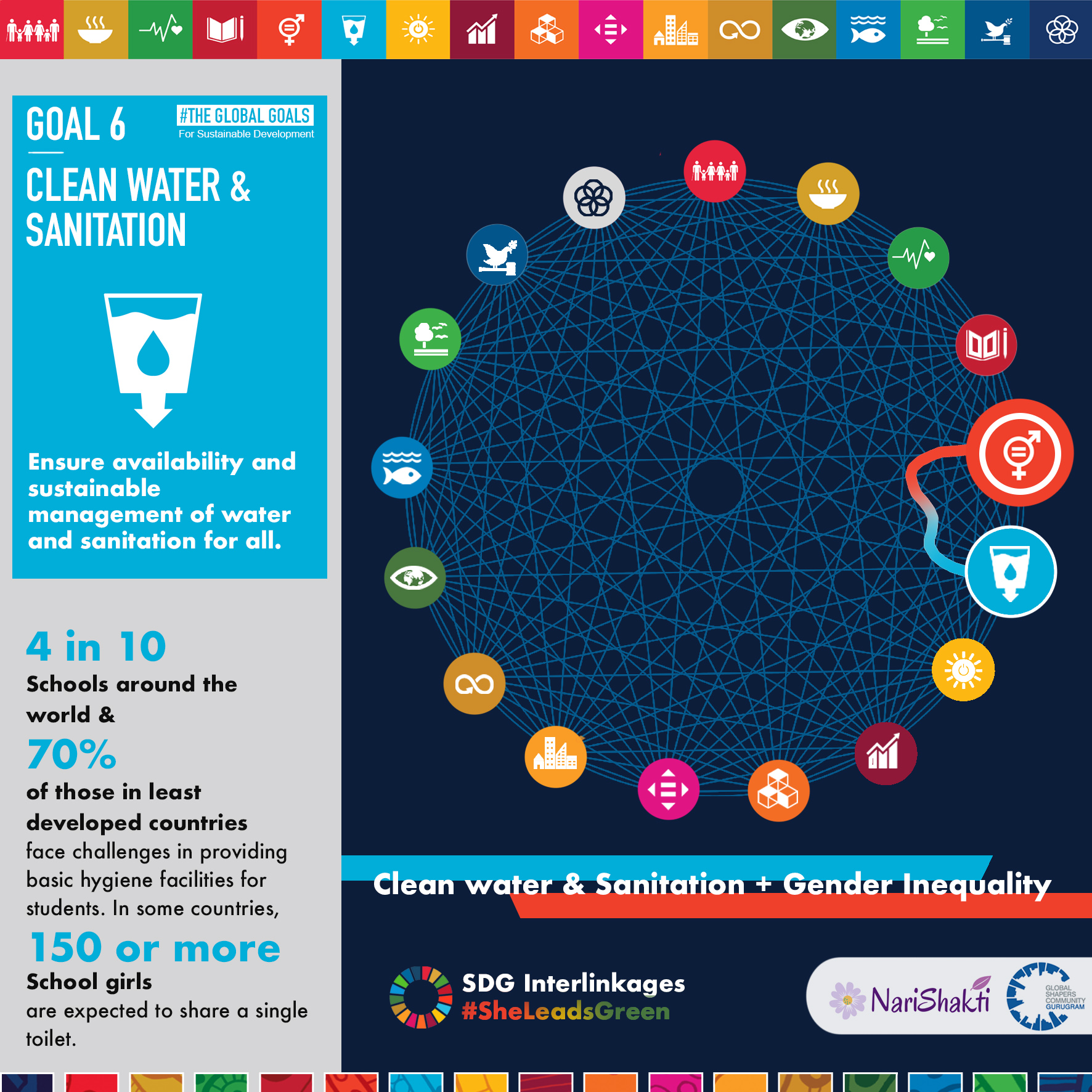
Gender parity for clean water and sanitation (SDG 6)

Why do we need to look at clean water and sanitation from gender lens?
- As per a report by UN Women, women and girls carry the heaviest burden, especially when seen from the context of the collection of drinking water.
- As per data from 61 developing countries, the report states that 80% of households without access to water on premises, have women and girls responsible for being primary procurers of water for household needs, often traveling long distances to collect it.
- As per ORF, women and girls spend nearly a total of 200 million hours every day collecting water
How is clean water and sanitation and gender-linked?
There are 8 targets and 11 indicators to achieve SDG 6. None of the 11 indicators are gender-specific
- When we consider the targets of SDG 6, target 6.2 about open defecation also specifically mentions paying special attention to the needs of women and girls, given the context of the prevalence of sexual violence towards women and girls in areas with open defecation.
- SDG 5 and 6 are also interlinked as women and girls who are more vulnerable to the effects of climate change, will also be disproportionately affected when issues of water scarcity and access will worsen, as an inevitable result of climate change as mentioned by an Oxfam report.
- The report also mentions that WASH (Water, sanitation and hygiene) issues are deeply relevant for women’s and girl’s empowerment, affecting their education, health, income and safety, among others.
A case story from our partner The Intelligent Indian (TIIx)
Project Red (P – Red) of The Intelligent Indian (TIIx) is working extensively towards SDG 6, with a focus on promoting sustainable menstrual hygiene management practices. P – Red focuses on breaking the stereotypes around menstruation, by initiating dialogues around menstruation in classrooms and on the ground delivery of free menstrual kits to people who menstruate. To date, they have reached out to over 2000 boys and girls through advocacy and have distributed more than 35000 menstrual kits in the remotest parts of Uttar Pradesh and Bihar. In its recent project, the team is working with the local administration of UP to make public schools menstruation friendly.
What outcomes can we achieve in SDG 6 if we reach gender parity?
We need to not only ensure a gender lens is undertaken when efforts toward SDG 6 targets are made, and also making a strong case for gender-transformative water and sanitation programs.
As the report elucidates, the policy recommendations for transforming gender-related power dynamics, include —
- Increasing the availability and quality of sex-disaggregated data on water, sanitation and hygiene
- Increasing women’s leadership and meaningful participation in water governance and integrated water resources management (IWRM) at all levels (household, community, national, and transboundary
- Finally challenging social norms around unpaid care work, women’s leadership, and gender-based violence.
References
- https://www.unwomen.org/-/media/headquarters/attachments/sections/library/publications/2019/progress-on-the-sdgs-the-gender-snapshot-2019-single-pages-en.pdf?la=en&vs=5813
- https://www.orfonline.org/expert-speak/covid19-need-overarching-gender-agenda-sdgs/
- https://reliefweb.int/sites/reliefweb.int/files/resources/bn-achieving-sdgs-5-6-gender-water-220320-en.pdf


